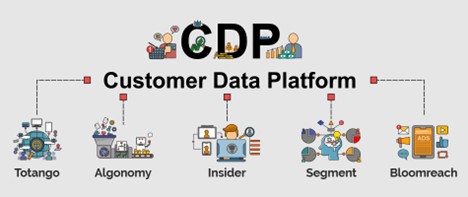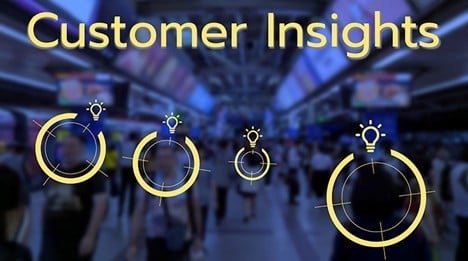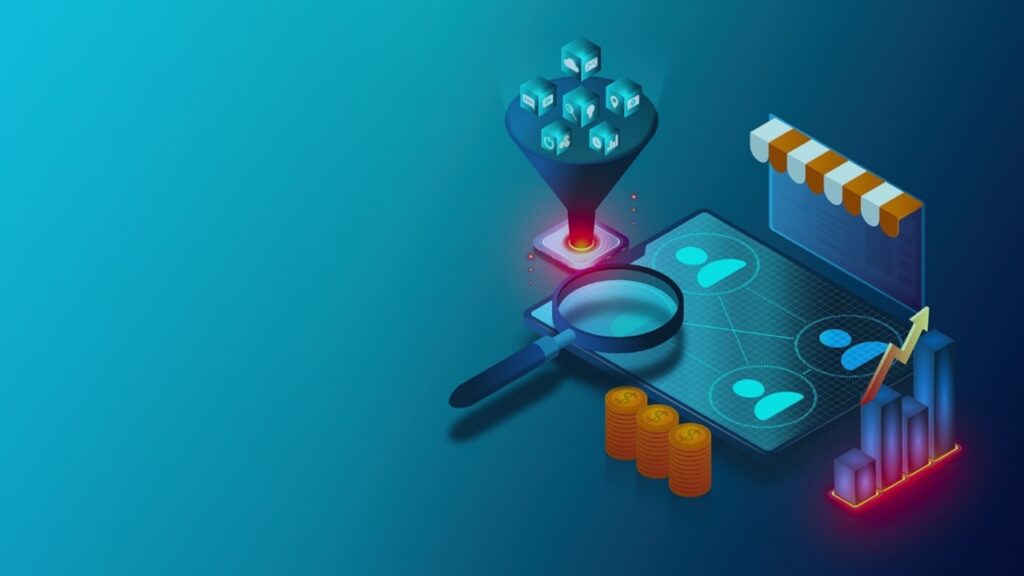The end is in sight for third-party cookies and IDFAs (Identifiers For Advertisers). But data still is the future of innovation, and it can be found anywhere from social media to email campaigns. It’s this omnipresence that businesses need to shake up their strategies for.
The problem tripping everyone up is unifying these types of data sources, especially when the intended use is complex. And this is where the demand for CDPs (Customer Data Platforms) comes in.
And with the Covid-19 pandemic, not only did demand increase, but customer behaviors and expectations also changed. With the lockdowns causing retailers a severe hit in outreach abilities and revenue, many turned to CDP development as the solution.
This blog explores CDP benefits and more:
What is CDP?
CDP is a prebuilt technology used to gain insight into customers and scale personalized experiences across marketing, sales, and service channels.
Businesses in all industries accumulate tons of data, and using this data to their advantage is vital for creating an effective business strategy that provides a personalized customer experience.
However, this it’s often fragmented and siloed across multiple systems, making it quite the task to collect, organize, and analyze. And even when it’s unified, non-technical teams will struggle to understand and apply it. But with CDP, there’s no need for a programming degree, a data science team, and 100 in-house developers.
5 Complete Suite of Digital Retail Apps, Powered by Industry’s First Real-time CDP

1. Totango
Totango’s DNA-CX (Dynamic No-Schema Active Customer Index Technology) is an intelligent customer data platform that allows users to unify their customer data streams.
Ideal for those who want to segment their customers and view different metrics, Totango helps identify which customers require prioritization.
2. Algonomy
Offering both AI-based actionability and deep domain-specific analytics. Algonomy combines real-time customer data, global retail software expertise, and analytics. All of which can be utilized to engage with customers across their whole lifecycle with relevant experiences.
Its machine learning algorithms are ideal for demand forecasting, store clustering, assortment planning, product rationalization, and even discount pricing.
3. Insider
Powered by AI and machine learning, Insider offers a multichannel Growth Management Platform (GMP) that drives growth across all channels, from acquisition to revenue. It leverages real-time predictive segmentation to deliver personalized analysis across all channels (from web to messaging, email, and apps).
Built on a unified data layer, it’s easy to implement and use.
4. Segment
Popular because of its easy setup, Segment also offers desirable features such as real-time tracking, modifiable dashboards, and the power to send data to multiple destinations. It enables users to collect and route their customer data to various integrated systems.
And if all of that didn’t sound like enough, Segment also has features for cross-channel engagement design, customizing data, and transforming customer data.
5. Bloomreach
This commerce experience cloud offers online and offline data tracking, a unified customer view, and advanced customer data analytics.
It is also kitted with futuristic machine learning and predictive recommendation features for an intuitive solution.
How are Real-Time CDPs Benefitting the Retail Industry?
CDPs are great at doing the heavy lifting for predictive analytics. It gathers raw, disparate customer data and organizes it into a specific customer tactic, which it then applies prebuilt predictive algorithms to. Some of its biggest benefits for retailers are:
Enhanced Customer Acquisition:
Utilizing lookalike modeling, CDP can identify prospects that resemble a business’s desired customers and then target them. An ideal feature for increasing re-engaging at-risk customers and building brand loyalty.
Shortened Conversion Times:
CDP uses customer interaction and purchases data to help businesses understand which channels and products resonate with customers for content creation and customer journey orchestration.
Personalized Omnichannel Customer Experiences:
A relevant customer experience is ensured as it uses both streaming and historical data to develop a multi-step customer journey based on the entire customer lifecycle. This is all tailored to customer behaviors and preferences across online and offline channels.
Optimized Advertising Spends:
Specific audiences can from suppressed from paid advertising campaigns. CDP achieves this by measuring the sensitivity of discounts among different segments. Which, for instance, avoids wasting promotions on customers who won’t wait for discounts or special offers.
Increased Speed to Market:
CDP’s business and user-friendly interface empower business teams to adjust data definitions and formats without needing an IT go-between. Marketing campaigns can be tested and measured to optimize performance without technical assistance.

Creating a Custom CDP
Here are the 4 steps that can’t be missed when creating a custom CDP:
1. Database Collection and Integration
All crucial customer data needs to be brought together for this step. The sources to focus on include surveys, reviews, email, e-commerce, retail POS, and website.
These provide vital customer data, including demographics, purchase histories, web & mobile browsing activity, email engagement, customer engagement, etc.
These need to be integrated using common linkage variables like phone numbers, names, and email addresses.
2. Data Clean-Up
After the data has been collected and combined, it needs to be cleaned and organized so that calculating and analyzing is effortless. This step involves removing errors and duplicates across data formats and systems.
Here are a few key things to keep in mind:
Validation: This process of validation guarantees that all data is correct, reliable, and consistent.
Unification: This is the process of linking records and removing duplicates.
Data Normalization: This involves transforming all data into one consistent and accessible format.
Categorization: This final process in data cleaning involves categorizing data for easy customer segmentation, insight, and activation.
3. Data Unification and Identity Resolution
This step merges data from multiple sources and links to individual customer profiles for valuable insights. There are 3 fundamental principles of data unification within a CDP:
Identity Graph:
A data collection of known customer identifiers associated with one another, an identity graph links data sets.
Deterministic Matching:
This process helps identify the same user across different devices by matching user profiles. It looks for exact matches between data using a precise matching of known variables such as email and phone numbers.
Probabilistic Matching:
Utilizing a statistical approach to measure the probability that two customer records are the same user, probabilistic matching leverages weights to calculate the match scores and thresholds to get a match, non-match, or possible match.
4. Data Enrichment
The final step is transforming this cleaned, organized, and formatted data into readily accessible information for all business team members. This data enrichment can include filling in missing details.
After these steps have been completed, the single customer view can be further enhanced with custom built-in CDP tools such as measurement and reporting dashboards, cross-channel marketing campaigns, automation, and more.
An Insightful Future with CDP

Even before the pandemic, industries tried using marketing data practically. Though many different tools and solutions were brought to the table, they were more of a miss than a hit.
But when CDPs entered the scene, brands finally had the technology needed to unify, analyze, and apply their customer data.
With the continuing development of social media platforms, apps, and more, businesses have more interactions and behaviors to track, collect, and analyze.
It’s about time the demand for an effective and sophisticated solution has been heard, and the challenges of modern retailers seem less daunting because of it. Finally, retail teams can create an accurate customer profile that spans all touchpoints.

Rick Heicksen is the Vice President of Sales at Chetu, Inc., a renowned global software development company. He manages accounts in multiple sectors, including Food & Beverage, Agriculture, Transportation, Energy, and IT Service Management. With his expertise in business development and exceptional customer service, Rick has helped many clients grow their businesses. Rick is known for his versatility and ability to keep pace with technological advancements, which has significantly influenced his success at Chetu. He earned his degree from Chapparal Community College and is passionate about staying up-to-date with the latest industry trends. Since joining Chetu in 2019, he has risen quickly and established himself as a thought leader within the Food and Beverage community, helping the company grow into an award-winning organization.






![‘Frankenstein’ Review – Guillermo del Toro’s Definitive Look At The Nature And Nurture Of Monstrosity [TIFF 2025] ‘Frankenstein’ Review – Guillermo del Toro’s Definitive Look At The Nature And Nurture Of Monstrosity [TIFF 2025]](https://cdn.geekvibesnation.com/wp-media-folder-geek-vibes-nation/wp-content/uploads/2025/10/Frankenstein-175_PF_20240430_20377_R-300x200.jpg)